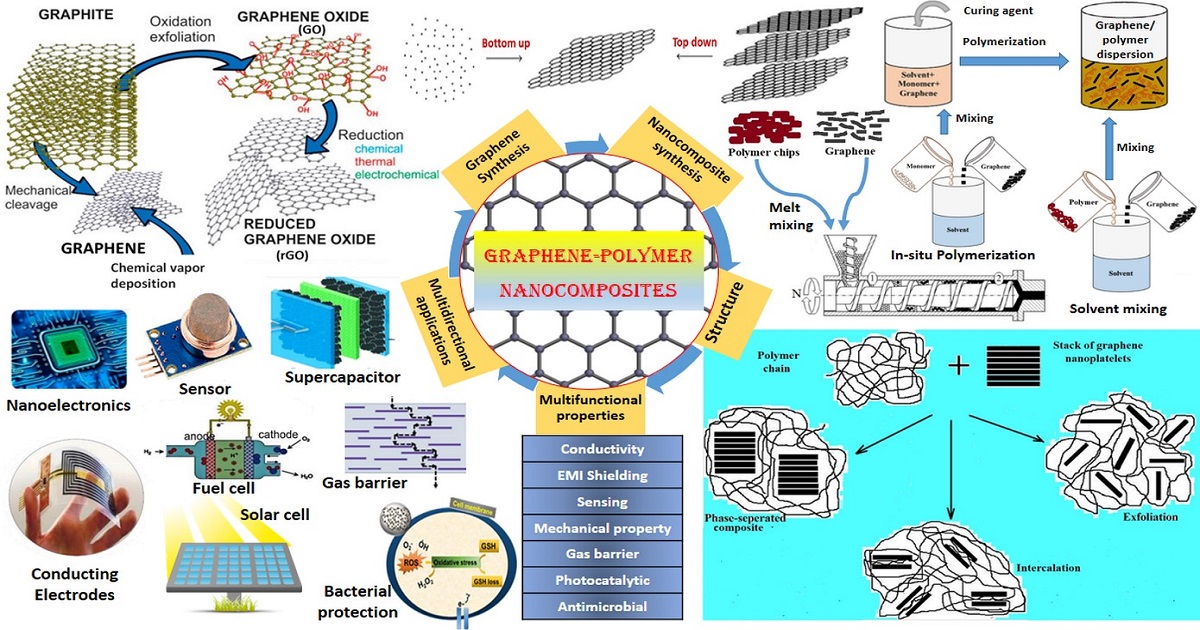Advances in Graphene-Based Polymer Nanocomposites: Synthesis, Properties and Multidirectional Applications
A special issue of Materials (ISSN 1996-1944). This special issue belongs to the section "Advanced Composites".
Deadline for manuscript submissions: closed (10 March 2024) | Viewed by 364

Special Issue Editor
Interests: polymer nanocomposites; 2D nanomaterials (graphene, clay, MXene); functional and smart textiles; wearable electronics; gas barrier and weather resistant materials
Special Issue Information
Dear Colleagues,
Graphene-based polymer nanocomposites have attracted significant attention in recent years due to their exceptional multifunctional properties and exemplary capabilities. The interplay of graphene's unique attributes with polymer matrices opens doors to unparalleled possibilities for tailoring nanocomposite materials with exceptional performance, making significant strides toward a sustainable and technologically advanced future. This Special Issue will provide a valuable and timely collection of articles demonstrating the immense potential of graphene-based polymer nanocomposites as a transformative class of materials.
Researchers are invited to submit original research work or reviews covering any of the following topics:
- Synthesis of graphene and its derivatives by different facile and/or green routes;
- Cutting-edge research covering various methods for the preparation of graphene/polymer hybrids, including solution blending, melt compounding, and in situ polymerization techniques;
- Challenges in the synthesis of graphene/polymer nanocomposites, potential solutions, and future perspectives for this rapidly evolving field;
- Structural characterization and understanding of the interface between graphene and polymers in depth, shedding light on the nanocomposites' superior mechanical, thermal, electrical, and barrier properties;
- Theoretical studies/modeling for establishing the structure–property relationship of graphene/polymer nanocomposites and validation by experimental studies;
- Innovative multidirectional applications of graphene/polymer nanocomposites across diverse industries such as energy storage, batteries and supercapacitors, solar cells, piezoelectric materials, wearable electronics, sensors and actuators, aerospace engineering, conductive hydrogels, gas barriers, microwave absorption, EMI shielding, UV shielding, antimicrobial applications, and many others.
I hope researchers, scientists, engineers, and industrial professionals will find the articles in this Special Issue invaluable in exploring the forefront of graphene/polymer nanocomposites and inspiring new avenues for innovative applications and scientific breakthroughs.
Dr. Bapan Adak
Guest Editor
Manuscript Submission Information
Manuscripts should be submitted online at www.mdpi.com by registering and logging in to this website. Once you are registered, click here to go to the submission form. Manuscripts can be submitted until the deadline. All submissions that pass pre-check are peer-reviewed. Accepted papers will be published continuously in the journal (as soon as accepted) and will be listed together on the special issue website. Research articles, review articles as well as short communications are invited. For planned papers, a title and short abstract (about 100 words) can be sent to the Editorial Office for announcement on this website.
Submitted manuscripts should not have been published previously, nor be under consideration for publication elsewhere (except conference proceedings papers). All manuscripts are thoroughly refereed through a single-blind peer-review process. A guide for authors and other relevant information for submission of manuscripts is available on the Instructions for Authors page. Materials is an international peer-reviewed open access semimonthly journal published by MDPI.
Please visit the Instructions for Authors page before submitting a manuscript. The Article Processing Charge (APC) for publication in this open access journal is 2600 CHF (Swiss Francs). Submitted papers should be well formatted and use good English. Authors may use MDPI's English editing service prior to publication or during author revisions.
Keywords
- polymer nanocomposites
- graphene and its derivatives
- electrical and thermal conductivity
- EMI shielding
- sensors and actuators
- energy storage
- wearable electronics
- gas barrier
- UV shielding
- antimicrobial properties
Benefits of Publishing in a Special Issue
- Ease of navigation: Grouping papers by topic helps scholars navigate broad scope journals more efficiently.
- Greater discoverability: Special Issues support the reach and impact of scientific research. Articles in Special Issues are more discoverable and cited more frequently.
- Expansion of research network: Special Issues facilitate connections among authors, fostering scientific collaborations.
- External promotion: Articles in Special Issues are often promoted through the journal's social media, increasing their visibility.
- e-Book format: Special Issues with more than 10 articles can be published as dedicated e-books, ensuring wide and rapid dissemination.
Further information on MDPI's Special Issue policies can be found here.






